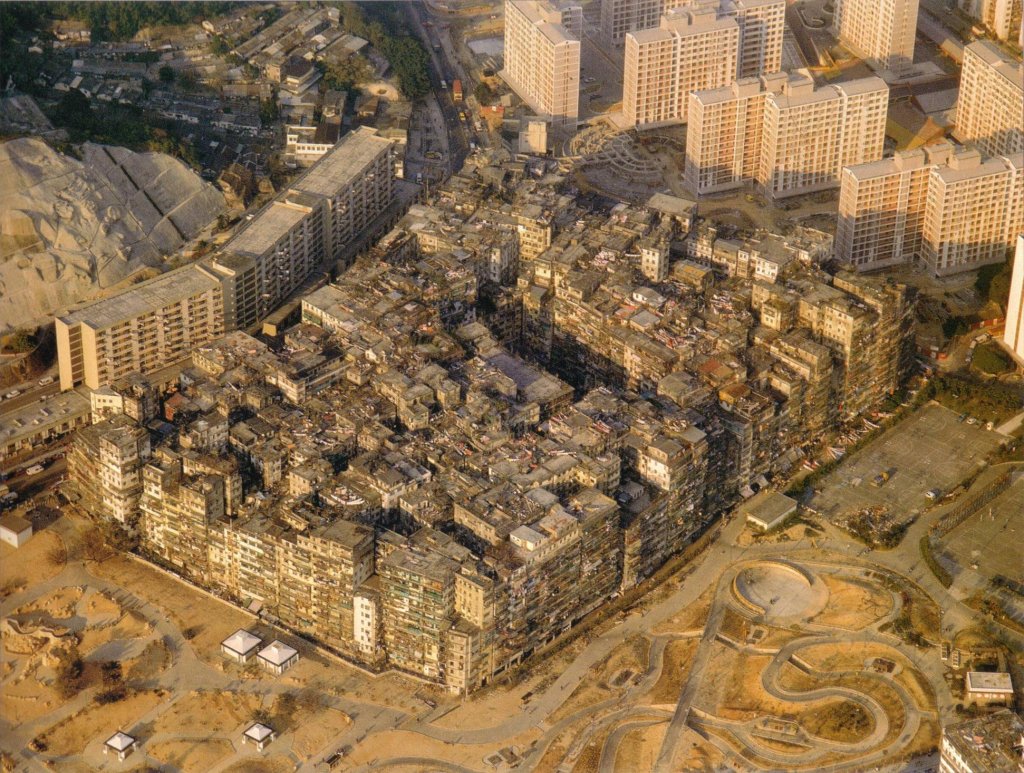Within the borders of British Hong Kong, Kowloon Walled City was an anarchic and highly inhabited Chinese enclave. Chinese government fortifications were turned into a British enclave in 1898 after China leased the New Territories from China. Due to the Japanese conquest of Hong Kong during World War II, the city’s population exploded. Around 50,000 people lived inside the city in 1990. The area was under the influence of local mafias from the 1950s through the 1970s, when trafficking of women and illegal drugs were common.
Administration intentions to destroy the Walled City of Hong Kong were revealed in January 1987 by Hong Kong’s authorities. The destruction started in March 1993 and was complete in April 1994, following a lengthy evacuation procedure and the handover of sovereignty from China to Britain. Walled City Park was established in December 1995 and encompassed the erstwhile walled city’s landmass. This has allowed for several ancient monuments from the walled city to be conserved. Its yamen structure and fragments of its southern gateway were also preserved.
Colonial History
The City was established as an installation during the Song Dynasty (960–1279) to handle the salt trade. A few security officers were posted in 1668, but little more happened for decades. About 1810, Chinese troops evacuated Tung Lung Fort as well as built a small coastal fort. Hong Kong Island was surrendered to Britain by the Treaty of Nanjing in 1842, under the throne of Daoguang, the Qing Emperor. Therefore, the Qing authorities made it mandatory to upgrade the castle concerning the conduct over the territory and prevent future British influence. The construction of a strong defensive wall and other upgrades were finished in 1847. 1854 saw insurgents conquer the walled city as during Taiping Rebellion, only to be recaptured days prior. It used to be Lai Enjue’s citadel, and is now the “Dapeng Association House” within the walled city.

China proclaimed its intention to recapture the walled city in 1945, following Japan’s capitulation. “Revised Framework Program for Restitution of Governance” was prepared by patriotic Chinese authorities in November 1946. It featured a school, a police department and other services. Regarding the Chinese Civil War, many refugees fled to Hong Kong, then by 1947, the city’s walls were occupied by more than 2,000 people. It was 1948 when the British made an unsuccessful plan to persuade them out of the walled city.
Diplomacy
China’s Ruling party decided to send a policy statement to the British ambassador on January 8, 1948. Ashton stated, “The Ministry of Foreign Affairs presently officially recognize to the British Embassy which, in conformity with the terms of such Agreement, China relishes sovereignty well over the City of Kowloon and though they have hardly any willingness of giving up this purview at any time.” The range of options was examined by the British Foreign Office on 4 February 1948, notably converting Kowloon Walled City into a Nationalist Chinese Consulate-General. However, the Chinese have agreed not to seek to execute that authority in practice. Furthermore, the British Foreign Ministry suggested that a public garden administered by the local corporation of Kowloon Leasehold landmass provides such a prospect.

Demolition
It was reported on January 14, 1987, that both governments’ officials had agreed to demolish the city’s walls. By March 10, 1987, keeping up with the news that such a walled city would just be turned into park land, the Secretary for District Administration petitioned that the Urban Council offer to assume the responsibility of the land after its destruction. The Urban Resource Center questioned the necessity for it “besides one more park” from a planned and operational standpoint, so this council decided to approve the state’s offer on the provision that the state pay for park establishment.
It took four months to implement. On March 23, 1993, annihilation of the walled city was launched and ended in April 1994. The next month, construction set about on Kowloon Walled City Park.



